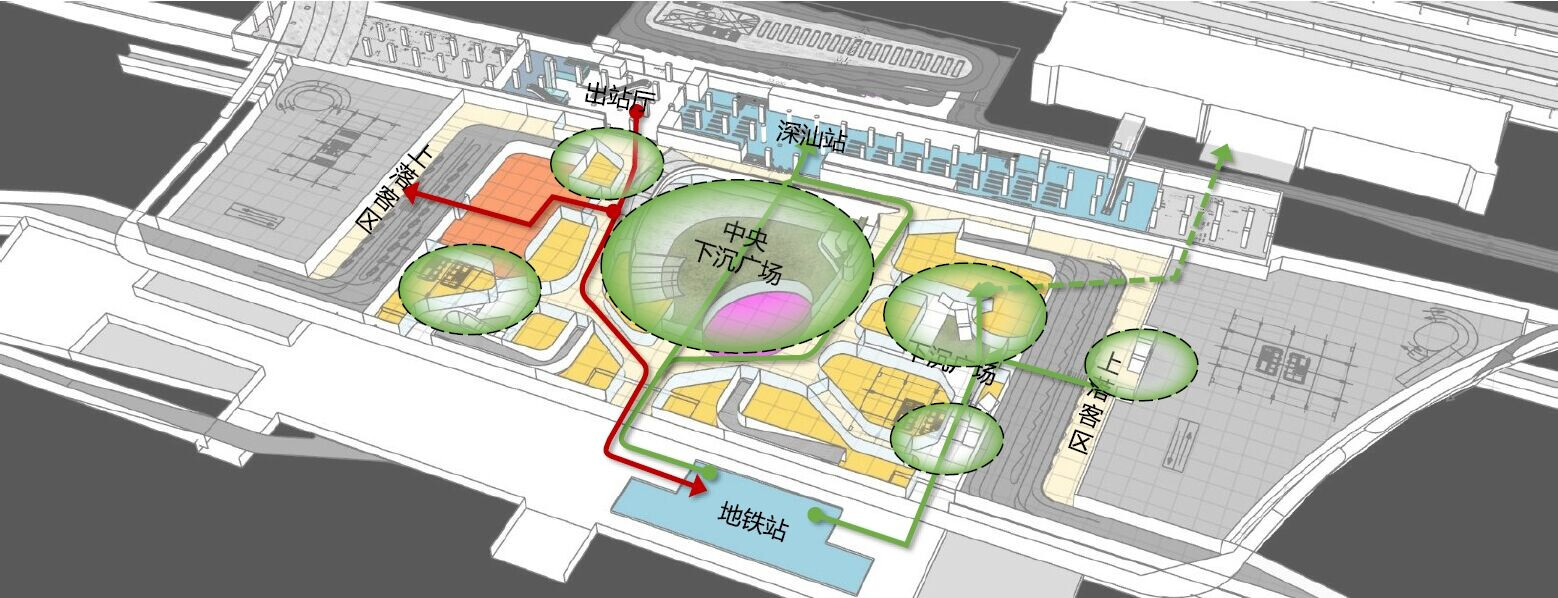As one of the main transport hub, the Huiyang Station (formerly Huizhou South Station) closely connects the city to the surrounding developments, including the future major railway system.

To further implement the transportation strategy, Aedas has enhanced the planning and design of Huiyang Station to create a porous, connected hub in Huizhou.
Huiyang Station TOD
Huiyang Station is located in the Nanzhan New City area of Huiyang District, fronting the sea and connecting with the surroundings for industrial development to attract capital investment and talent.
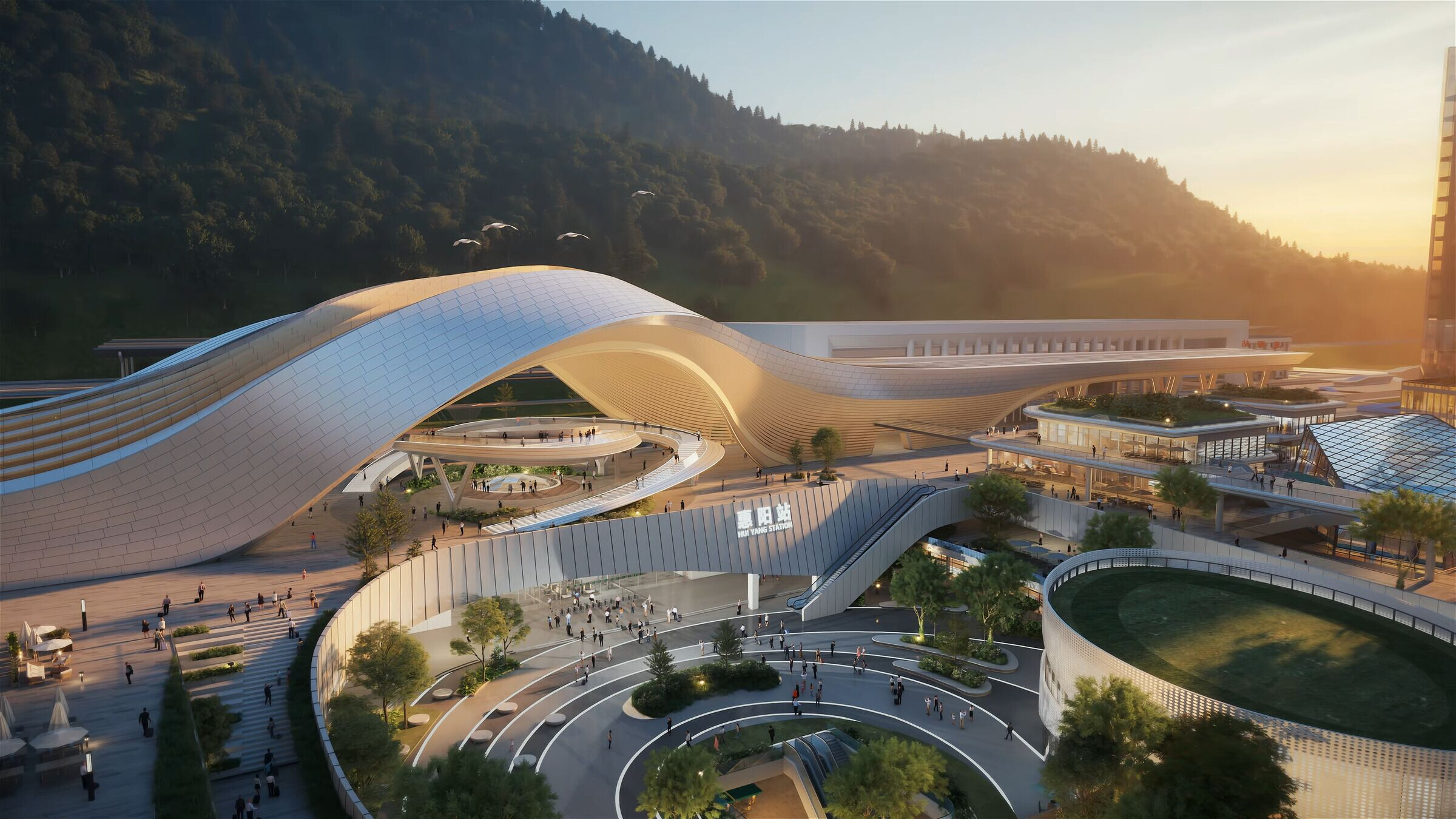
The newly built Shenshan Railway significantly reduces the travel time to Nanshan and Luohu in Shenzhen, facilitating the development for Shenzhen and Huizhou.
Multi-dimensional spatial design
The project is comprised of railway stations along the hillside, resulting in multiple elevation differences within the area. The Shenzhen Railway Station divides the project into southern and northern plots, where the former is mainly mountainous and the later is the TOD facilities and property development are located at. Efficient TOD planning is required to reconnect the fragmented urban spaces through infrastructure to ensure a high connectivity within the surrounding developments.

Masterplan
In response to the complicated plot conditions, the design adopts an integrated approach, connecting national railways, subways, interchanging stations and pedestrian systems to the city, which facilitates the commercial development above the stations.
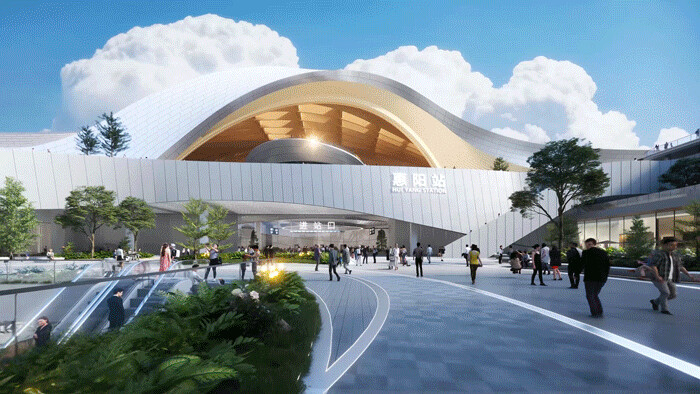
The design places the station in the south and urban development in the north. A T-shaped pedestrian path connects three station buildings and facilities, promoting a smooth circulation and integrating underground retail and transport space with the above-ground public spaces.
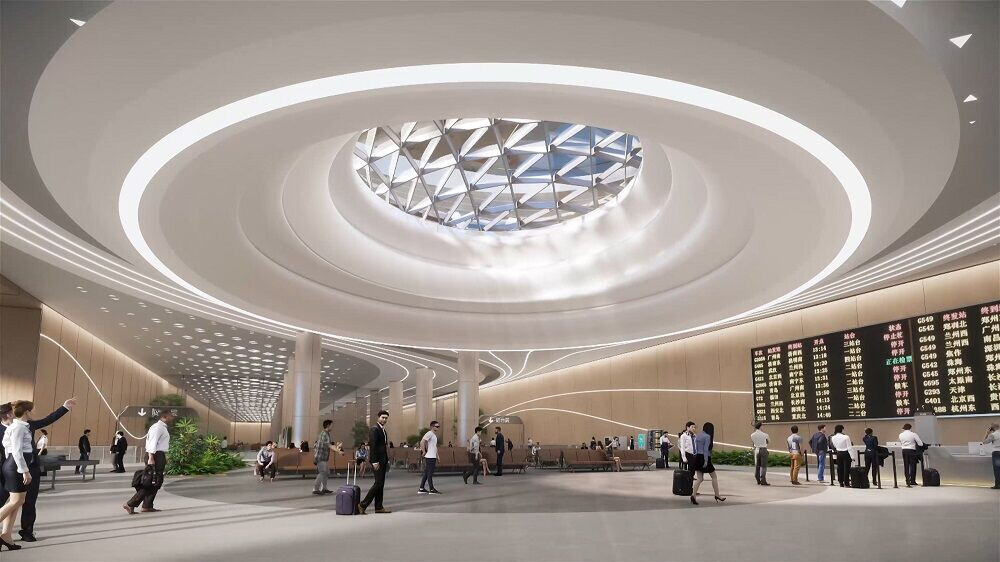
The stations connect the waiting lounges of above and underground, allowing visitors to travel freely within the building. The design integrates the railways with High Speed Railway and optimises the circulation to meet the diverse needs of tourists.
Architectural Design
‘This is the latest generation hub in Huizhou merging the station, the city and the nature, providing a sense of arrival to visitors.’ Aedas Executive Director Leon Liang says.

The hub is adjacent to Yagongding Forest Park, enjoying rich natural landscape to inject vibrancy to the gateway and create an open, flexible space within the station.
Seamless integration with the nature
The Shenzhen Railway Station adopts a fluid architecrual form featuring the elevated rooftop in the middle, introducing the landscape scenery to the station and blurring the boundary between station and the city. The design features a combination of wood-colored metal and translucent grilles.
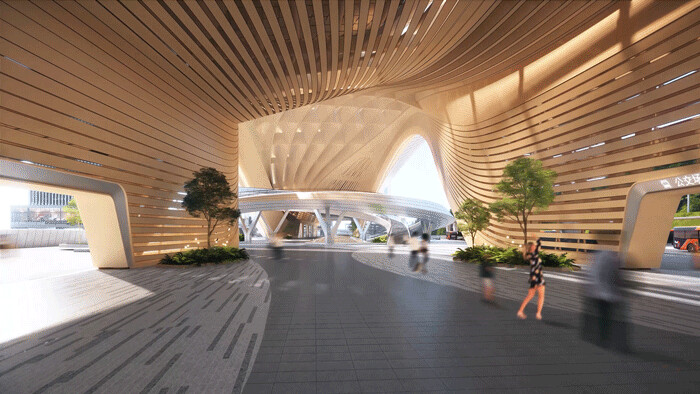
A vibrant city hub
The design vitalizes the stations by creating a multi-level central plaza that integrates transportation, park spaces, commercial services, and urban activities. It establishes a comfortable and diverse transfer experience, connecting surrounding areas through pedestrian bridges, and utilises natural resources for scenic viewpoints, becoming a focal point for urban development.
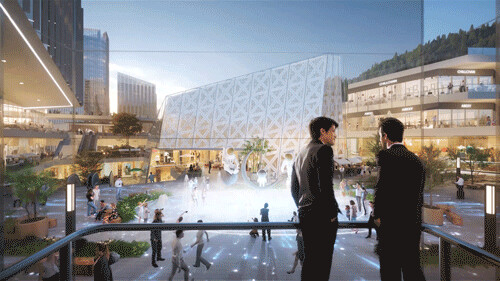
Interconnected pedestrian bridges
The design incorporates a horizontally expanded rooftop structure to accommodate the circulation from inter-changing transfers. It responds to the urban context, while the combination of translucent skin and metal grille ceiling creates a dynamic and well-guided interior space. The building's flexible gray spaces bridge gaps between stations, the city, and the surrounding landscape.




